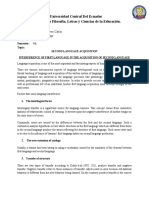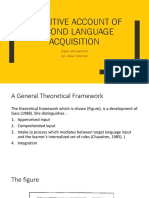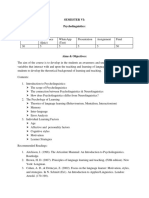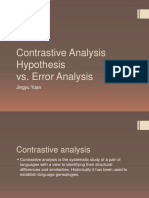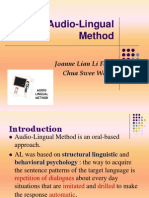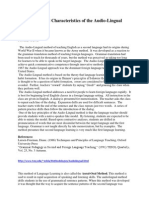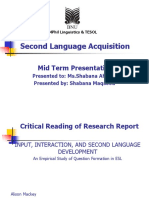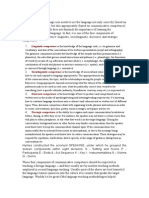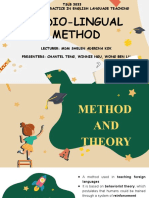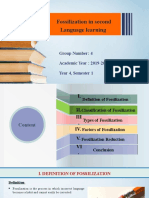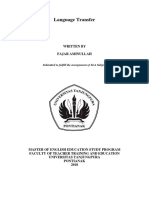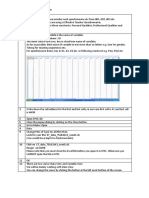100% found this document useful (1 vote)
2K views22 pagesLanguage Transfer and Language Interference
The document discusses the concept of language transfer, where elements of a person's native language (L1) are applied when learning a new language. Language transfer can occur consciously or subconsciously, and can involve transferring grammar, vocabulary, pronunciation and other linguistic features from L1 to the new language (L2). Whether the transfer is positive and facilitates learning, or negative and causes errors, depends on the similarities and differences between the L1 and L2. Factors like the learner's language background and limited L2 vocabulary can influence the degree and type of language transfer experienced.
Uploaded by
Nur Aisyah SuharinCopyright
© © All Rights Reserved
We take content rights seriously. If you suspect this is your content, claim it here.
Available Formats
Download as PPT, PDF, TXT or read online on Scribd
100% found this document useful (1 vote)
2K views22 pagesLanguage Transfer and Language Interference
The document discusses the concept of language transfer, where elements of a person's native language (L1) are applied when learning a new language. Language transfer can occur consciously or subconsciously, and can involve transferring grammar, vocabulary, pronunciation and other linguistic features from L1 to the new language (L2). Whether the transfer is positive and facilitates learning, or negative and causes errors, depends on the similarities and differences between the L1 and L2. Factors like the learner's language background and limited L2 vocabulary can influence the degree and type of language transfer experienced.
Uploaded by
Nur Aisyah SuharinCopyright
© © All Rights Reserved
We take content rights seriously. If you suspect this is your content, claim it here.
Available Formats
Download as PPT, PDF, TXT or read online on Scribd
/ 22

